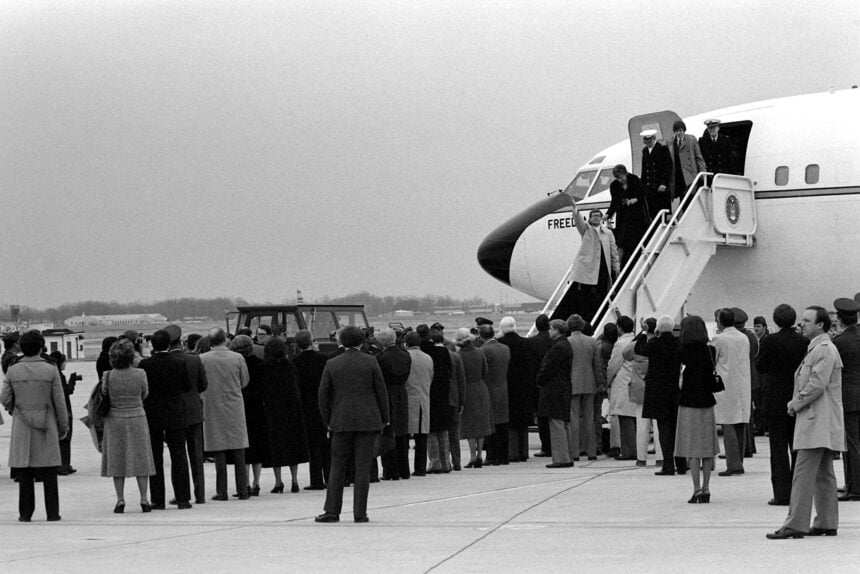When is a single-source story good enough for The New York Times? When it appears to confirm a 40-year-old Democratic conspiracy theory.
Peter Baker, the Times‘ chief White House correspondent, published Saturday a bombshell report, “A Four-Decade Secret: One Man’s Story of Sabotaging Carter’s Re-Election.”
It was indeed merely one man’s story. An 85-year-old Democrat, Ben Barnes, claims to have personal knowledge of efforts by Ronald Reagan allies to delay the release of U.S. hostages from Iran until after the 1980 election.
A reader has to plough through 10 paragraphs of this sensational story before encountering a concession that “confirming Mr. Barnes’s account is problematic.”
But not to fear—Baker assures us Barnes “has no obvious reason to make up the story.”
Suppose an octogenarian Republican from Arkansas comes forward tomorrow to provide a personal account of Bill Clinton’s involvement in drug trafficking in the 1980s, a notion long promoted in certain GOP circles. No corroboration, just his word for it.
In all the worlds of the widest cinematic multiverse imaginable, is there any in which the Times would publish such a piece?
The new standard for “news that’s fit to print” is when a source “has no obvious reason to make up the story.” As long as that source is from the right party.
People less sophisticated than a Times White House correspondent might classify partisanship as an obvious motive. Yet Baker tells readers Barnes was afraid of how his fellow Democrats would react to his claims.
Come again? Nothing in Baker’s report explains this counterintuitive assertion. The myth that Jimmy Carter lost the 1980 election because Reagan committed a misdeed tantamount to treason is in fact an enduringly popular conspiracy theory among liberals.
As Baker recounts, a Democratic-controlled Congress investigated the story in the 1980s but was unable to prove it. A former Carter administration official published a book “advancing the theory” (as Baker writes) in 1991, promoting it with a “guest essay” in—where else?—The New York Times.
Baker, in a remarkable line, bolsters Barnes’ credibility by telling us what he is not: “Mr. Barnes is no shady foreign arms dealer with questionable credibility” like certain earlier proponents of the “October surprise” storyline.
Instead Barnes is a career Democratic politician who was once the protege of Texas Gov. John Connally. By 1980, Connally had become a Republican, and he sought the GOP presidential nomination that year but lost to Reagan. Barnes remained close to Connally, however, and accompanied him on trips around the Middle East that summer.
Barnes says Connally told Arab leaders to send a message to Iran urging the Shi’ite revolutionaries to keep their American hostages until after the election. This would prolong a crisis that weakened Carter, and a newly elected President Reagan would look kindly on Tehran in return.
Barnes has waited until anyone who might contradict his story is dead. Connally died in 1993, and William Casey, the Reagan campaign manager and later CIA director to whom Connally supposedly reported on return from his Middle East excursions, died in 1987.
In the absence of testimony from anyone who could authenticate Barnes’ account, Baker pads the narrative by citing four men who have no direct knowledge about Barnes’ claims but who did hear the tale from Barnes himself over the years. Although none is identified as a Democrat, three of the four have ties to Lyndon Johnson and his legacy.
Jimmy Carter lost the 1980 presidential election resoundingly. He carried only six states and the District of Columbia. He finished 9.8 points behind Ronald Reagan in the popular vote.
With numbers like that, a partisan denial of election results has to go beyond questioning returns from individual districts or states. To discredit Reagan’s victory, and excuse Carter for the multitude of failures that led to his defeat, requires a different kind of conspiracy theory. One that projects the taint of Iran-Contra back to Reagan before he even became president, and redeems Carter for the greatest shame of his presidency, is irresistibly seductive to liberals. Even if the whole thing comes down to one politician’s word.
Journalists write the first draft of history and, in this case, perhaps the second or third as well. As a profession, academic historians are hardly less biased than the legacy media in their preference for one of our major parties. When liberals boast of being on the right side of history, it does not mean time has proved them right. It means their conspiracy theories and inadequately sourced stories have passed for truth in the textbooks and paper of record.
COPYRIGHT 2023 CREATORS.COM

Leave a Reply